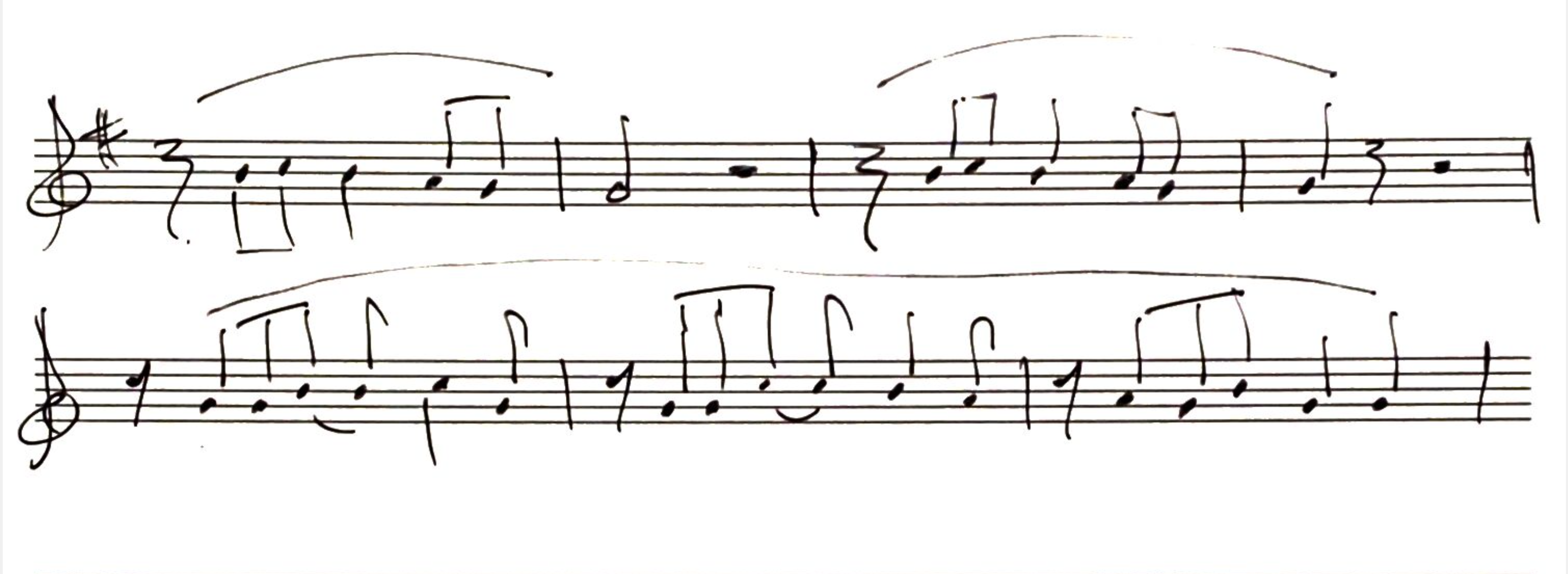The word 'phrasing' gets thrown around a lot, but what is it, and what does it mean for us as vocalists? How do we work with it? What do we work on it with? What effects change in phrasing?
Allow me to explain.
The example below is the beginning melody of the song 'Every Breath You Take' written by Sting and recorded by The Police. You will notice three arching lines over the notes of the melody. In this context, they are serving as phrase markers.
A phrase in music, is the equivalent of a sentence. It shows us where we begin, and where we are going. These six bars together might form a small paragraph, if we take the analogy a little further. If we think about it that way, we could also draw a phrase marker over all six of these bars. It's worth mentioning, that the contour of our melody follows that logic quite nicely. We start on a b and come to a rest on a g (see below), which in this key is the tonic. A very suitable resting place.

But how do we 'phrase' as vocalists? What is it that makes a vocal melody sound smooth and connected?
Quite simply, the flow of air and managing the disruptions.
The two main disruptions will be inhalation and consonants.
Let's take the second one first, as in some respects it's far easier.
Consonants break up the flow of air, and can cause the phrases to be choppy, or lacking in connection. Out of this has developed the notion of 'singers speech' or 'downplaying the consonants' as I sometimes refer to it as, but the prime goal is to keep the flow of air as consistent and connected from vowel to vowel as possible. Focus on the vowels, connect them to one another, and you will have to assess your consonants.
When it comes to inhalation as a flow of air disruption, one would rightly argue that there's not much to be done about it. We do, after all, have to inhale. HOW we do it, however, is of prime importance.
The key is to maintain as much of our core body muscle engagement as we can, while releasing just enough to allow for a 're-upping' of our lateral expansion. Doing so creates a rapid, silent inhalation, and leaves us ready for our next phrase.
Release too much engagement, and we're left decompressed and unprepared for the next phrase. This is particularly problematic on phrases that begin on high notes.
When we put these practices together, we get control over the flow of air through the music that we're singing. This allows us to choose how the melody is constructed; how we get from one note to the next
If we need a declarative statement, we may choose to enunciate the consonants more and allow for small gaps in between pitches. This is generally interpreted as declarative or commanding.
If, on the other hand, we wish to sound soothing, or enticing, we may emphasize the connection from vowel to vowel, downplaying the consonants, and as such performing a smoother, more legato phrase.
Combine those elements with dynamics (changes in volume) and our understanding of melodic movement (going from b, the third, to g, the tonic in our example) and we can truly sculpt our listeners' experience.
That, in my opinion, the power of phrasing, and our need to understand it. Phrasing is the big picture presentation of our work. Understanding it empowers us to present the music that we perform in our own unique way.


